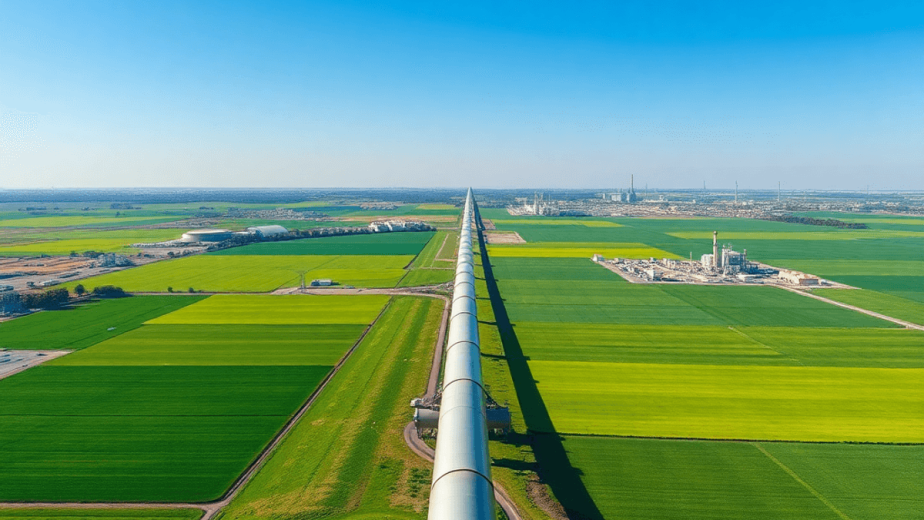Introduction
The inspection of aging infrastructure is crucial for maintaining public safety and ensuring functionality. As structures deteriorate over time, proactive evaluation becomes essential to mitigate risks and prevent failures.
Recent advancements in inspection techniques have transformed how we assess infrastructure health. Key developments include:
- Non-destructive testing (NDT) methods that evaluate structural integrity without causing damage.
- Robotic inspections using drones, which access hard-to-reach areas efficiently.
- Continuous monitoring systems equipped with advanced sensors for real-time data collection.
Technology plays a pivotal role in these innovations, enhancing both safety and operational efficiency. By leveraging intelligent systems, such as those developed by companies like Mira Spatial, stakeholders can revolutionize infrastructure management, ensuring longevity and resilience in critical assets. For more information on their innovative solutions, you can visit our website or reach out through their contact page.
The Need for Innovative Inspection Techniques
Aging infrastructure presents significant challenges that demand innovative inspection techniques to ensure infrastructure safety.
1. Risks Associated with Aging Infrastructure
Deterioration of critical systems can lead to structural failures, posing safety hazards to the public. For instance, bridges and roads may develop unseen weaknesses that compromise their integrity.
2. Economic Implications of Neglecting Inspections
Failing to conduct timely inspections can result in costly repairs and extended service disruptions. The economic burden extends beyond immediate repair costs; it also includes impacts on commerce and property values. This is often a direct consequence of deferred maintenance, which can exacerbate these economic implications.
3. The Necessity for Proactive Maintenance
Adopting proactive maintenance strategies is essential in preventing catastrophic failures. Regular inspections allow for early detection of potential issues, enabling timely interventions that preserve the functionality and longevity of infrastructure assets.
Implementing advanced inspection techniques mitigates risks, supports economic stability, and fosters a culture of safety in maintaining aging infrastructure.
1. Non-Destructive Testing (NDT) Techniques
Non-destructive testing (NDT) includes various methods used to assess the characteristics of materials and structures without causing any harm. NDT techniques are crucial for inspecting infrastructure, as they enable comprehensive evaluations while maintaining the asset’s integrity.
Key NDT Methods
Here are some important NDT methods:
- Ultrasonic Testing: This technique uses high-frequency sound waves to detect internal flaws or measure material thickness. It is particularly effective in assessing weld quality in bridges and pipelines.
- Infrared Thermography: This method detects thermal variations on surfaces, helping identify issues such as insulation failures or moisture intrusion. Infrared imaging is valuable for inspecting electrical systems and roofing structures.
Advantages of NDT
Using NDT offers several advantages:
- Zero Damage: Assessments do not compromise the structural integrity, ensuring continued safety and functionality.
- Cost-Efficiency: Early detection of potential issues can minimize repair costs and extend asset lifespan, contributing to long-term savings.
Applications in Infrastructure
NDT techniques are widely used in various infrastructures:
- Bridges: Regular ultrasonic testing can monitor critical components like beams and joints, ensuring they meet safety standards.
- Pipelines: Infrared thermography helps identify leaks or corrosion, preventing environmental hazards and costly failures.
Emphasizing these innovative inspection techniques enhances maintenance strategies, paving the way for safer infrastructure management.
2. Robotic Inspections Using Drones and Automated Systems
Robotic technology has emerged as a game-changer in infrastructure inspections, leveraging drones and automated systems to enhance safety and efficiency.
Benefits of Robotic Inspections
- Access to Hard-to-Reach Areas: Drones navigate challenging terrains, such as high-rise structures, remote pipelines, or hazardous environments where human access poses risks.
- Cost Efficiency: Reduces labor costs and minimizes downtime during inspections by providing rapid assessments.
- Data Collection: Equipped with high-resolution cameras and sensors, drones capture precise data that can be analyzed for structural integrity.
Case Studies
- Bridges: In a notable case, drones inspected the Golden Gate Bridge’s cables, identifying wear that traditional methods overlooked. This proactive measure allowed for timely maintenance interventions.
- Power Lines: Utilities have deployed drones for inspecting transmission lines in mountainous regions. The ability to cover vast areas quickly ensures critical infrastructure remains operational while enhancing safety protocols.
The integration of robotic technology not only streamlines inspection processes but also elevates the standards of safety and reliability in aging infrastructure management.
3. Continuous Monitoring Systems with Advanced Sensors
Continuous monitoring systems are a significant advancement in infrastructure health management. These systems consist of several key components:
- Advanced Sensors: Devices that collect data on structural conditions, such as strain, temperature, vibration, and displacement.
- Data Transmission Networks: Systems that facilitate real-time data transfer from sensors to centralized monitoring platforms.
- Data Analytics Platforms: Software applications that process and analyze incoming data for actionable insights.
The Role of Advanced Sensors
Advanced sensor technologies are essential in detecting changes that may indicate potential failures. For example, fiber optic sensors can monitor stress and strain within materials, providing early warnings of structural degradation. These sensors operate continuously, ensuring that any deviations from normal parameters are captured instantaneously.
Importance of Real-Time Monitoring
Real-time monitoring is crucial for timely interventions. By providing immediate access to critical data, stakeholders can make informed decisions regarding maintenance or repair needs. This proactive approach not only reduces the risks associated with aging infrastructure but also optimizes resource allocation and enhances long-term safety and functionality.
The integration of continuous monitoring systems sets a new standard for infrastructure management, representing a shift towards more intelligent and responsive approaches in protecting our built environment.
4. Data Analytics and AI Integration for Predictive Maintenance Strategies
Artificial intelligence (AI) is crucial in changing how we maintain infrastructure. It can process large amounts of inspection data, making it easier to identify patterns and trends. This information helps us create predictive maintenance strategies that can foresee problems before they happen.
Key benefits of using Data Analytics and AI for Predictive Maintenance:
- Efficient Data Processing: AI algorithms can analyze complex datasets rapidly, identifying anomalies and trends that traditional methods may overlook.
- Predictive Insights: By leveraging historical data, organizations can forecast maintenance needs, thus optimizing resource allocation and minimizing downtime.
- Informed Decision-Making: Actionable insights derived from data analytics empower stakeholders to make data-driven decisions, enhancing operational efficiency and safety.
For instance, companies like Mira Spatial use AI-powered analytics in their Asset Intelligence Platform. This platform provides real-time anomaly detection and interactive dashboards, helping decision-makers act quickly. Such innovative approaches not only extend the lifespan of infrastructure assets but also significantly reduce unexpected repair costs and enhance overall reliability.
5. Innovative Materials Enhancing Durability in Infrastructure Projects
The evolution of construction materials plays a crucial role in improving the durability and lifespan of infrastructure. Advances in material science have led to the development of innovative solutions, such as:
1. Ultra-High-Performance Concrete (UHPC)
This advanced concrete formulation offers exceptional strength, durability, and resistance to environmental factors. It significantly outperforms traditional concrete, making it ideal for critical structures like bridges and high-rise buildings.
2. Corrosion-Resistant Reinforcements
Traditional steel reinforcements are prone to corrosion, especially in environments exposed to moisture and salts. Innovative alternatives, including fiber-reinforced polymers (FRP) and stainless-steel reinforcements, enhance structural resilience and extend lifespan.
Utilizing these modern materials reduces the frequency and extent of maintenance needed. By decreasing susceptibility to wear and environmental degradation, infrastructure projects benefit from:
- Lower long-term costs associated with repairs
- Increased safety due to enhanced structural integrity
- Extended service life of assets, postponing the need for replacements
Incorporating these innovative materials into construction practices ensures that aging infrastructure can withstand the test of time while maintaining functionality. As technologies advance, ongoing research into material properties will further support this transformative approach to infrastructure management.
6. Condition Assessment Methods Balancing Tradition with Technology
Condition assessment methods are essential for evaluating the condition of infrastructure assets. By combining traditional approaches with modern technologies, we can ensure thorough evaluations. Here are some key methods used:
1. Visual Assessments
This basic technique allows inspectors to identify surface-level issues such as cracks, corrosion, and wear. While simple, it requires skilled professionals to interpret findings accurately.
2. Load Testing
This method involves applying controlled loads to structures to evaluate their performance under stress. It provides valuable data on structural behavior and capacity, which is crucial for ensuring safety.
The integration of these methods with advanced technologies enhances accuracy and efficiency. For example, using drone imagery alongside visual assessments can help us see areas that are difficult to access without putting safety or integrity at risk.
Fitness-for-service evaluations are also important in this context. These assessments determine whether an infrastructure asset is still suitable for its intended use despite deterioration over time. They guide rehabilitation efforts by pinpointing necessary interventions, thus optimizing maintenance strategies.
By incorporating both traditional and innovative assessment techniques, we can achieve more reliable infrastructure management. This enables us to take timely actions that preserve the functionality and safety of our assets.
Regulatory Compliance, Investment Needs, and the Future Outlook on Inspections
Regulatory compliance plays a crucial role in shaping inspection practices for aging infrastructure. In recent years, evolving regulations have introduced strict safety standards aimed at minimizing risks associated with deteriorating structures. Key areas of focus include:
- Enhanced Reporting Requirements: Infrastructure owners must adhere to more rigorous documentation processes, ensuring transparency and accountability.
- Regular Audits: Increased frequency of inspections mandated by regulatory bodies improves the likelihood of early fault detection.
Despite these advancements, funding for aging infrastructure repairs remains a significant challenge. Current investment levels are insufficient to meet the growing demands for maintenance and upgrades. The following points highlight the pressing need for increased financial commitment:
- Budget Constraints: Many local and state governments face fiscal limitations that hinder necessary investment in infrastructure.
- Long-term Planning: A lack of strategic vision often results in reactive rather than proactive maintenance approaches.
The future of inspections depends on addressing these funding gaps while adapting to new regulatory environments. Investing in advanced inspection technologies can help meet safety standards and improve the overall condition of critical infrastructure assets.
Conclusion: Embracing Innovation for Sustainable Infrastructure Management
Innovative inspection techniques play a crucial role in solving the problems caused by old infrastructure. They are important because they:
- Enhance Safety: Regular inspections using advanced technologies reduce risks and ensure public safety.
- Save Costs: Proactive maintenance lowers long-term expenses related to disastrous failures.
- Enable Data-Driven Decisions: Real-time analysis provides actionable insights for informed management.
The future outlook on inspections is promising, but it needs commitment from stakeholders in different industries. Investing in advanced technologies is crucial to enable:
- Sustainable management of infrastructure
- Improved longevity of assets
- Compliance with changing regulations
Working together and embracing innovation will strengthen our infrastructure systems, leading to safer and more resilient communities. Stakeholders must prioritize funding and resources to implement these cutting-edge strategies, ensuring the integrity of our essential structures for future generations.



